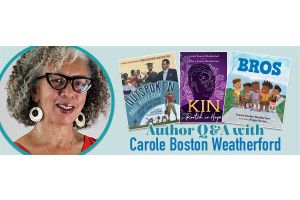Teaching Teachers the Value of the Graphic Novel



“Graphic Novels are just superhero comic books.” “They don’t even have a narrative.” “They’re not even real reading.” School librarians hear these types of comments every day. It’s clear that no matter how popular the Graphic Novel genre is with readers of all ages, the value of this literary format has not caught on with all educators.
So, how do you explain to teachers and administrators and even parents that Graphic Novels are a valuable part of the reading landscape and that they teach comprehension and literacy? That was the top question from our audience of librarians during a recent webcast examining the allure of Graphic Novels.
In response, JLG Graphic Novel Category Editor Wendy Xu said that while educators may think of Graphic Novels as “candy books,” instead they should think about the important skills that students can acquire by reading them.
"Picture books" all grown up
Graphic Novels are a natural evolution for children—after all, they spend a lot of time with picture books being read to them as youngsters! Graphic Novels take the picture book to the next level, pairing more sophisticated stories and visuals in novel-length form to allow students to make connections between the images and text.
“For weak language learners and readers, Graphic Novels’ concise text paired with detailed images helps [them] decode and comprehend the text,” says Meryl Jaffe, an instructor at the Johns Hopkins University Center for Talented Youth, Online Division, and the author of several books on using comics in the classroom. “Reading is less daunting, with less text to decode.” (For help with convincing parents and educators about the learning benefits of comics, check out this resource from Dr. Jaffe).
A genre that transcends ages and reading levels
Graphic Novels appeal to students on a broad spectrum of reading and age levels, Wendy pointed out during the webcast. That means they can begin enjoying this genre in elementary school and continue to read them as they mature into middle school and high school. It’s no different than a student who takes to humor or mystery; there are outstanding Graphic Novels they can relate to at every age.
Reading Graphic Novels helps to "read people"
Graphic Novels also sharpen skills like empathy. The pairing of a visual story with minimal text forces the reader to “read the emotions,” the body language and the expressions of the characters to deepen the meaning of the story and how the characters are affected. Developing empathy is the result—and it’s a vital part of the emotional development of a child.
Furthermore, with Graphic Novels, readers develop visual literacy. This is the ability to make inferences about stories based on reading images, with or without text. And this widens the discussion options for educators. Now, they can ask students to evaluate the art in the Graphic Novel and have the students analyze the impact of the art and its ability to convey meaning.
This is another skill that has use beyond academic success; it translates to students being able to “read” others in social interactions in real life. Bookseller Emma Nichols penned a post in Publishers Weekly arguing that Graphic Novels are the perfect teachable format, especially relating to the development of coping skills.
More resources to help
For more about Graphic Novels and the value they bring to you, educators, readers and parents, take 45 minutes to listen to our webcast with Wendy Xu and Graphic Novel Author and Illustrator Katie O’Neill. Another great resource is the Comic Book Legal Defense Fund (CBLDF), where you can get discussion starters on using Graphic Novels in your classroom or a guide specifically created for librarians with a history of Graphic Novels along with suggestions on where and how to shelve them.
How are you convincing teachers to use Graphic Novels?






